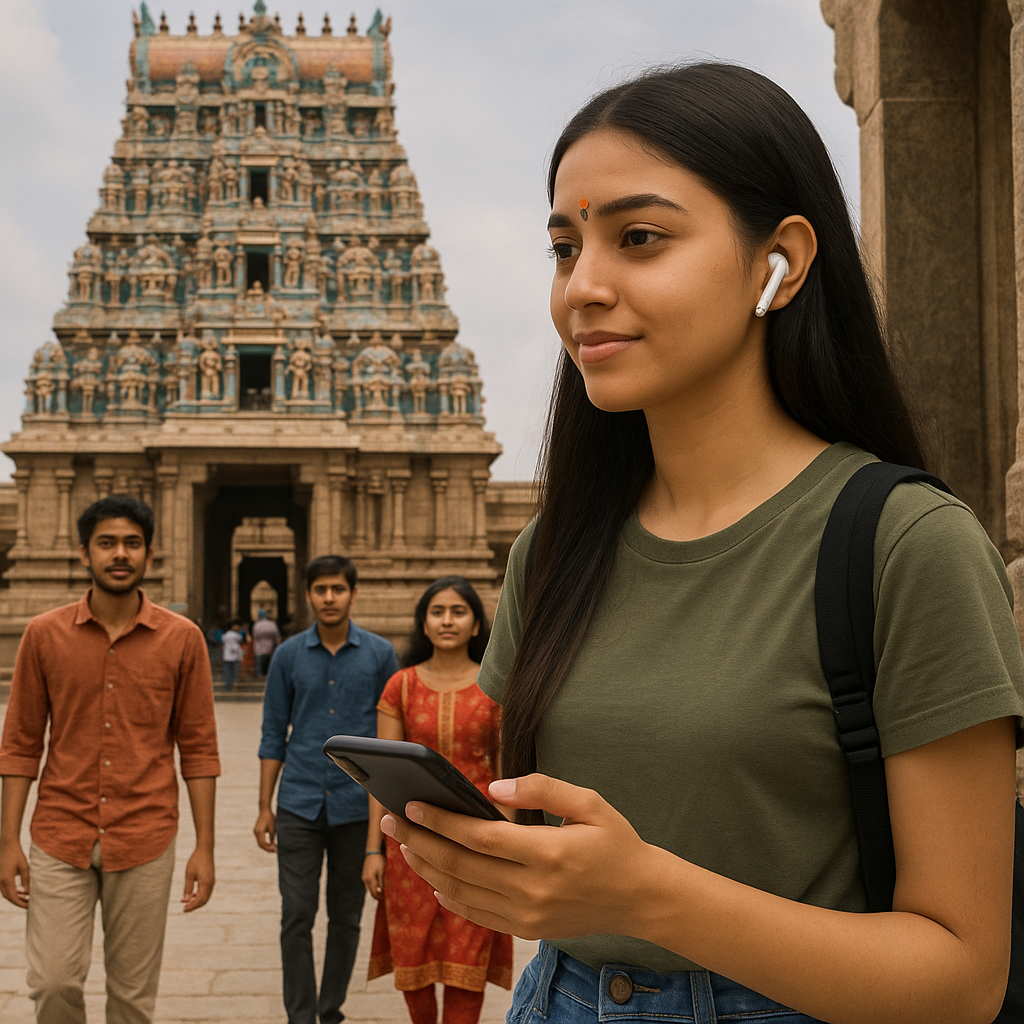Gen Z & Sacred Spaces: Why Young Indians Are Redefining Temple Visits
India has always been a land of temples, shrines, and sacred spaces that echo with chants, bells, and devotion. For centuries, visiting these places was a family ritual — a collective act of faith passed from generation to generation. But the way young Indians, especially Generation Z, connect with these spaces is undergoing a quiet yet profound transformation. They are not rejecting faith; they are redefining it — shaping temple visits into experiences of peace, reflection, and personal meaning.
From Ritual to Reflection
For earlier generations, temple visits were about duty — an act of respect to parents, tradition, and God. Gen Z, however, is visiting temples for different reasons. Many young people now see temples as spaces for mental peace, self-discovery, and mindfulness. In a world full of deadlines, distractions, and digital noise, the silence of a temple offers something rare — stillness.
For some, lighting a diya is not only a religious act but also a form of meditation. For others, circumambulating a sanctum is a way to reconnect with their roots or express gratitude. The language of devotion is changing: it’s less about “should” and more about “want.” Temples are becoming places to recharge emotionally and spiritually — like sanctuaries for the mind.
Faith Meets Wellness
Another striking change is how spirituality and wellness are merging. Many young Indians see prayer, yoga, and meditation as part of the same spectrum of inner care. Visiting a temple is no longer separate from a wellness retreat or a mindful break. This generation often talks about “energy,” “vibes,” or “positivity” — concepts that link inner healing with sacred surroundings.
Weekend temple visits, once a family routine, are now self-planned getaways for peace and balance. Young professionals who live in cities are turning to temples and ashrams not only for blessings but to slow down from their fast-paced lives. Faith, for them, is becoming a personal wellness journey rather than a fixed set of obligations.
The Rise of ‘Shrinecations’
One of the most visible trends among Gen Z is what some call “shrinecations” — combining pilgrimage with travel and exploration. A visit to Rishikesh may include meditation by the Ganga and a trek to nearby hills. A trip to Varanasi might involve temple darshan in the morning and exploring ghats or cafés by evening.
These journeys are no longer only about rituals or strict schedules; they are also about experience, aesthetics, and adventure. The young generation captures these moments through photography, vlogs, and social media posts — not out of vanity but out of a genuine desire to share beauty and emotion. Temples are not just holy places; they are cultural landmarks filled with art, architecture, and stories that fascinate young minds.
Digital Faith: The Online Devotee
In the age of smartphones, spirituality too has gone digital. Many young Indians book pujas online, stream temple aartis, or follow spiritual influencers who explain scriptures in relatable language. Even during in-person visits, phones are part of the ritual — used to navigate routes, learn chants, or document experiences.
This blending of the digital and the divine has made faith more accessible and personalised. A young person in Mumbai can participate in a ritual at Tirupati or Kashi without leaving home. Temples too are evolving — introducing online donations, live darshan, and QR codes for history details. The sacred is entering the digital era, and Gen Z is leading the way.
Choice Over Compulsion
Perhaps the most important aspect of this transformation is the shift from compulsion to choice. Gen Z is not visiting temples because they are told to; they are going because they want to. Their relationship with faith is self-driven, curious, and fluid. They might not follow every ritual, but they believe in the essence of spirituality — gratitude, compassion, and self-awareness.
Interestingly, this independence has made many of them more open to exploring multiple traditions. A young Hindu may visit a Buddhist monastery, a Sufi dargah, or a church — not out of conversion, but out of curiosity and respect. Faith, for this generation, is an open landscape, not a fixed boundary.
Temples Adapting to a New Generation
Temples across India are beginning to notice and respond. Improved infrastructure, cleaner surroundings, digital facilities, youth-friendly volunteering programs, and cultural events are drawing younger visitors. The idea of the temple as a living community space — not just a site of ritual — is gaining ground. Many spiritual organisations now engage youth through art, music, environmental drives, and digital storytelling.
This modern approach is not about diluting tradition; it is about making it relevant. When young Indians see that temples welcome them as thinkers, learners, and seekers — not just worshippers — they form a deeper connection.
A Redefinition, Not a Rejection
The popular assumption that younger generations are “less religious” misses the truth. Gen Z is not abandoning temples; they are redefining their purpose. They prefer meaning over mechanics, connection over compulsion. The temple, for them, is a space for peace, gratitude, and discovery — not merely ritual observance.
In a way, this transformation mirrors the spirit of India itself — a culture that constantly renews its traditions without losing its essence. As Gen Z continues to redefine sacred spaces, they are ensuring that temples remain not just relics of the past but vibrant centres of modern spirituality — where faith meets freedom, and devotion meets discovery.
~Religion World Bureau









